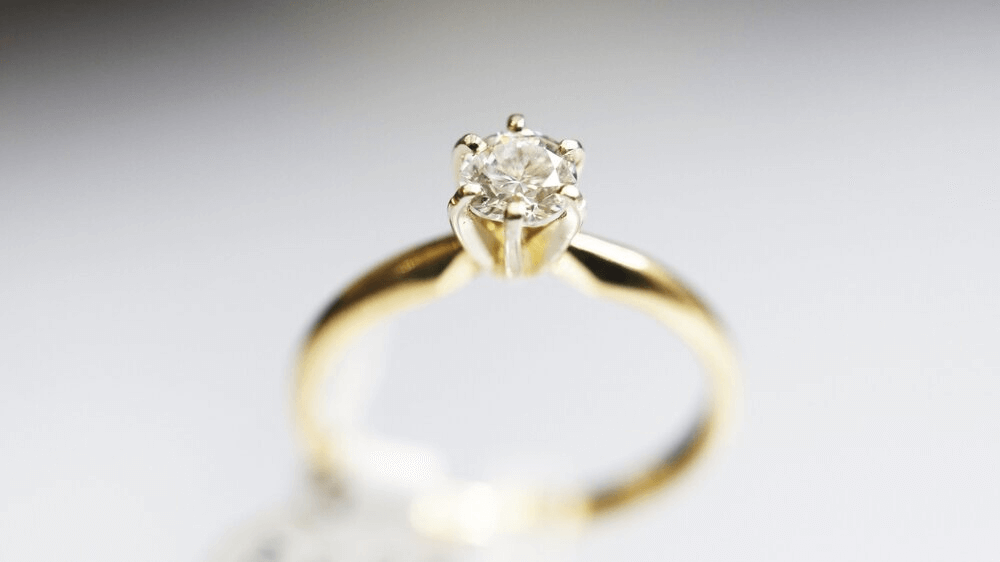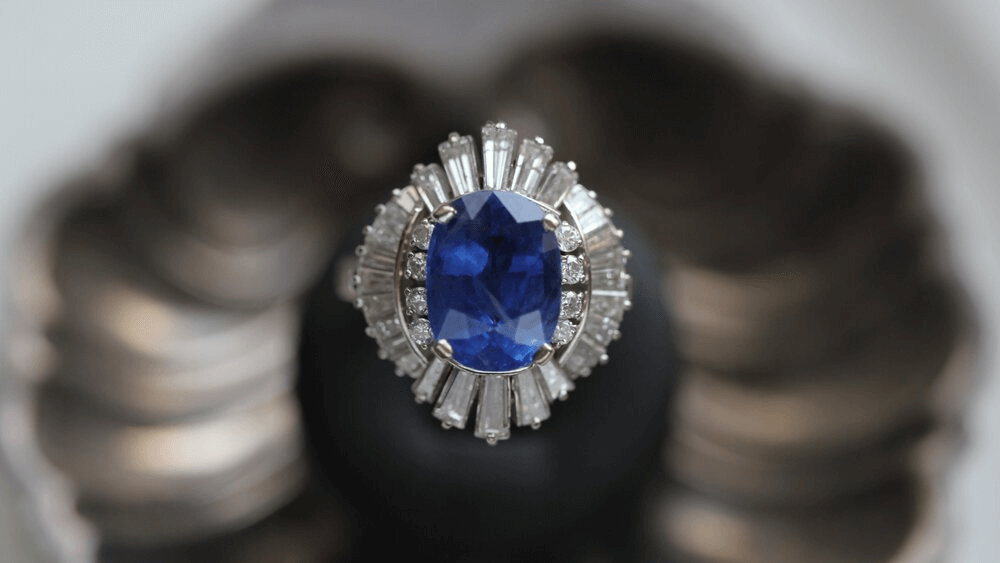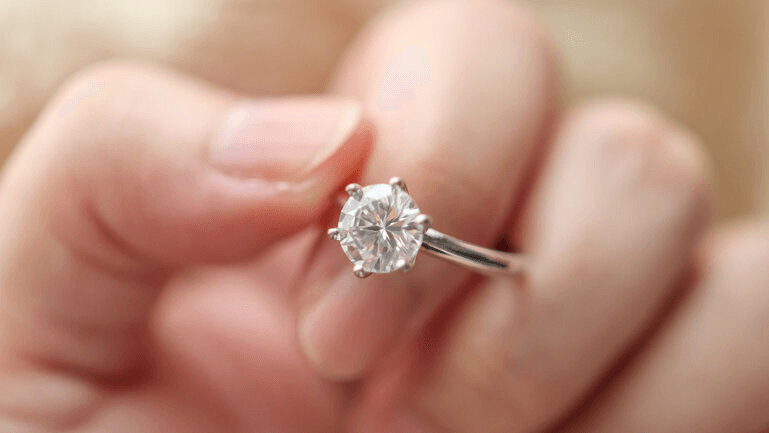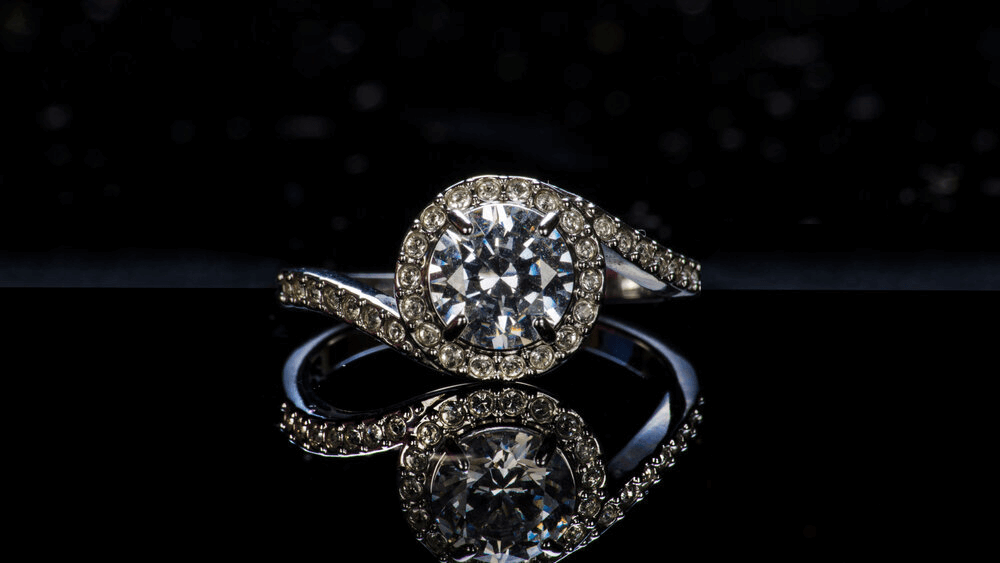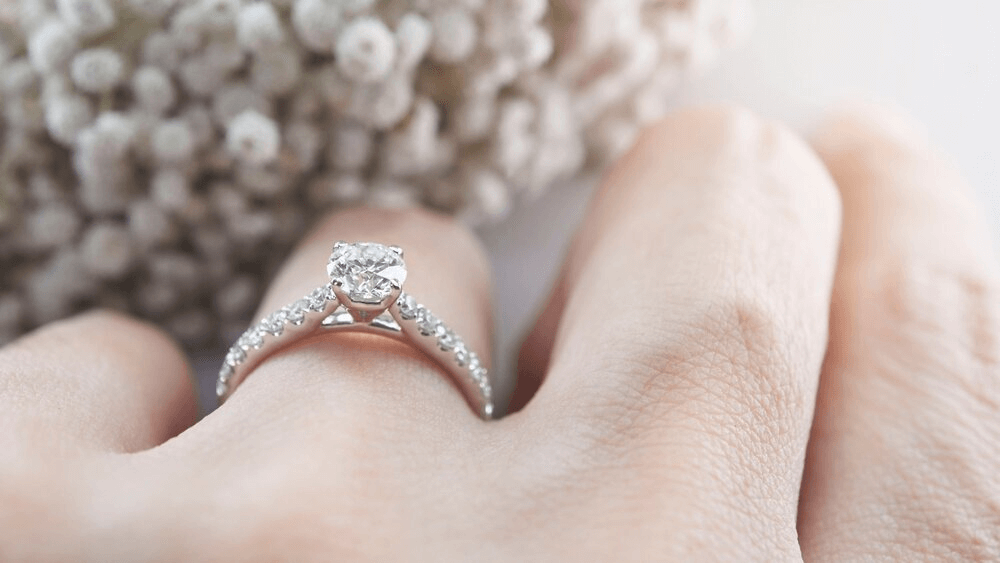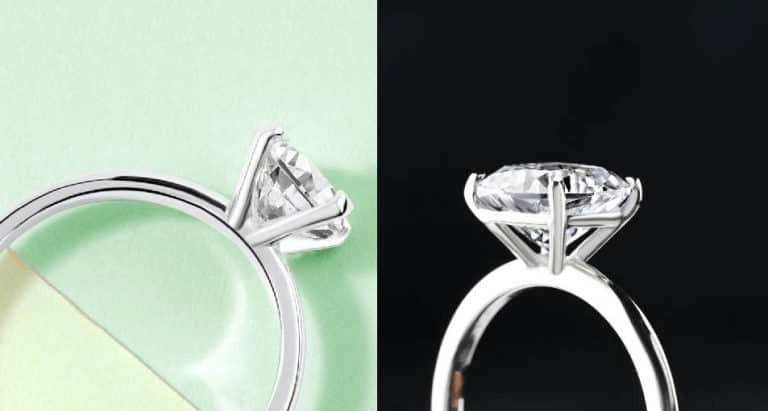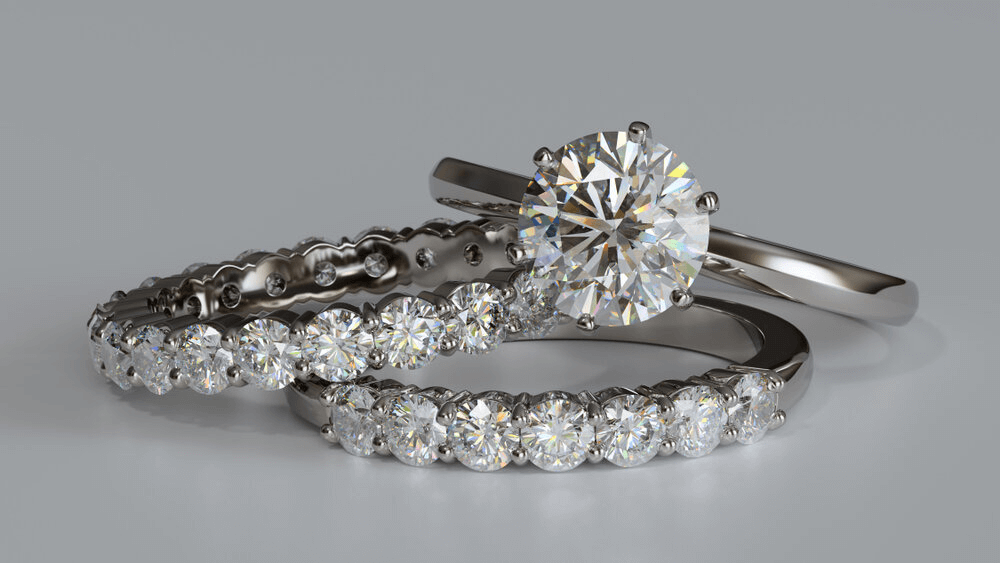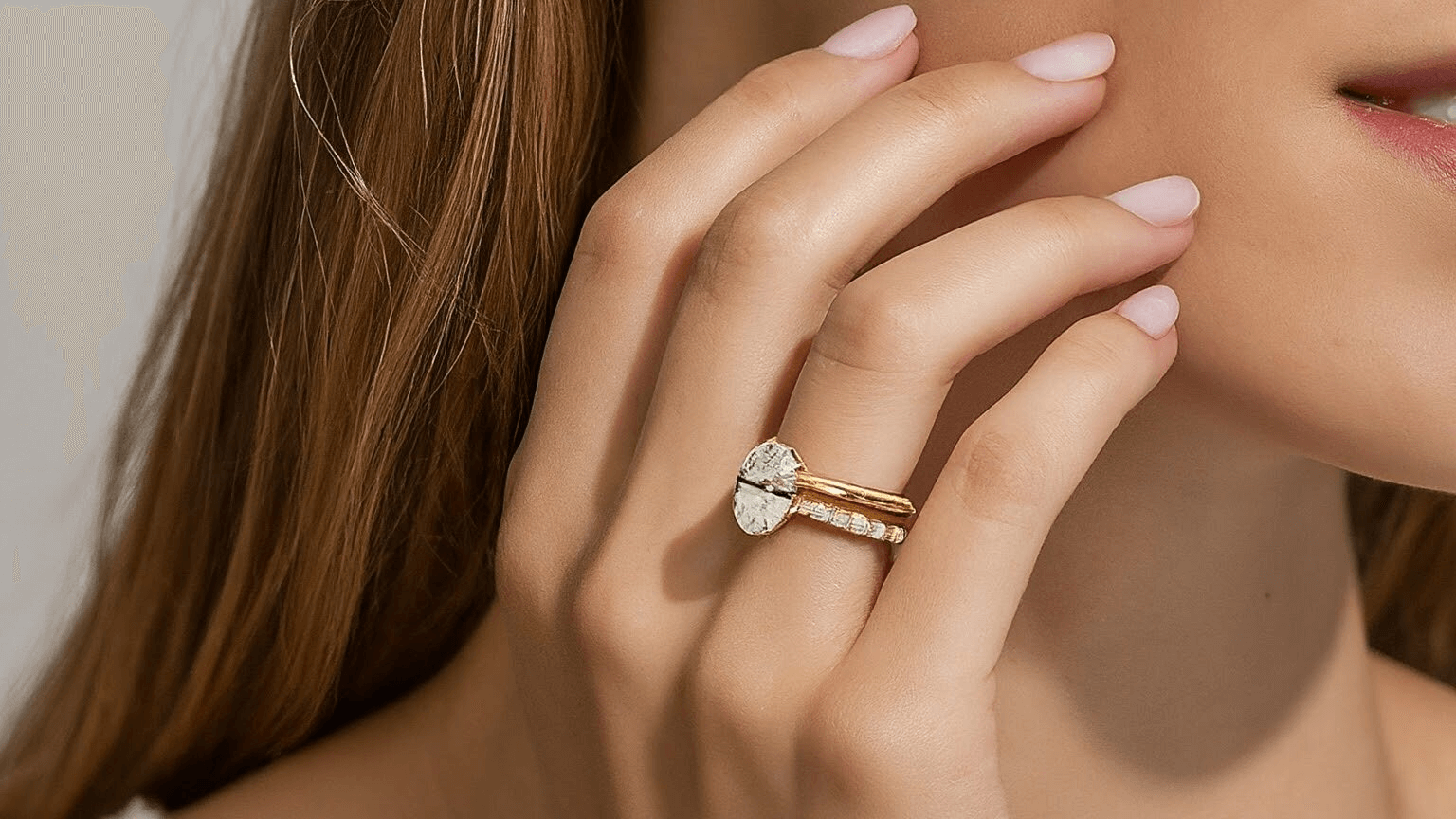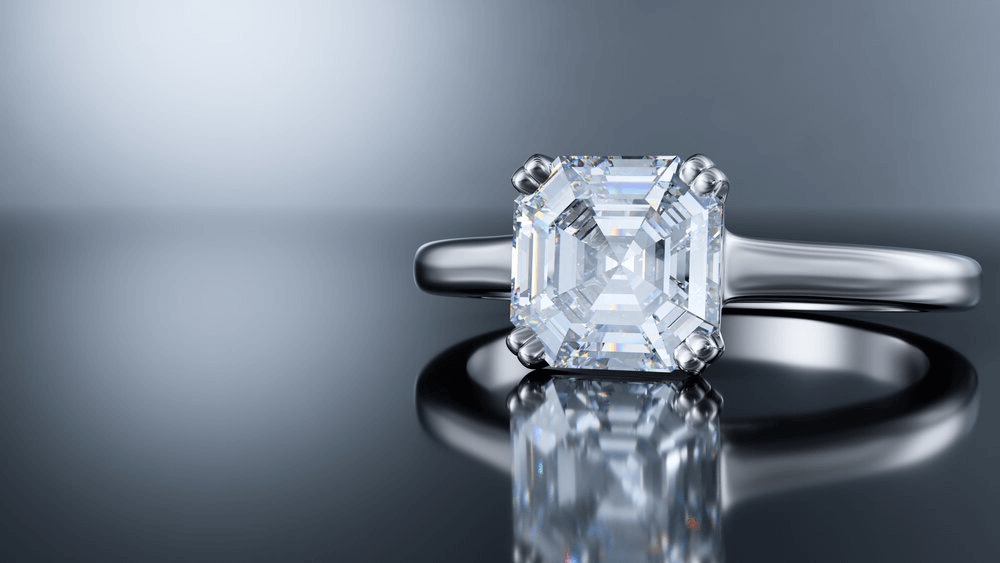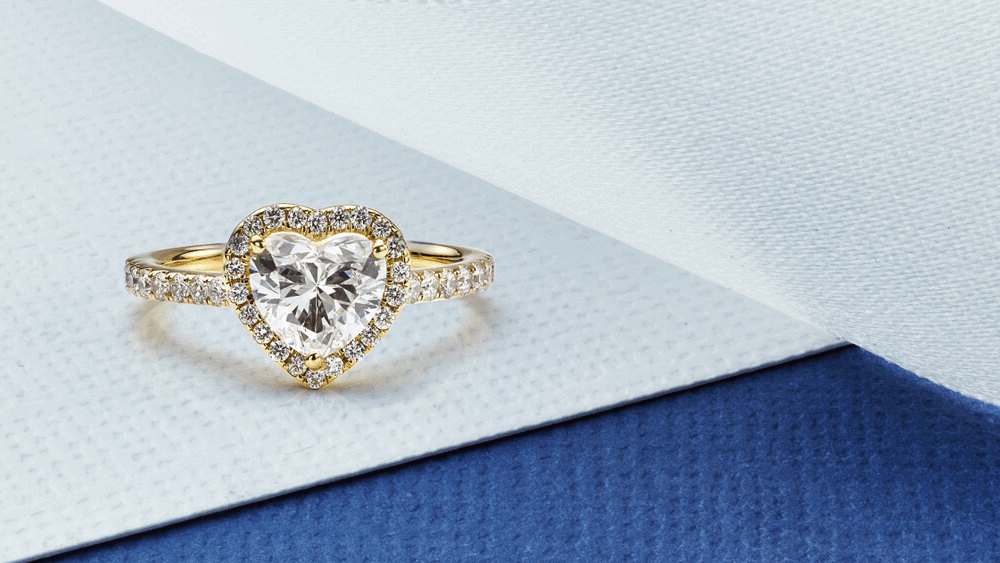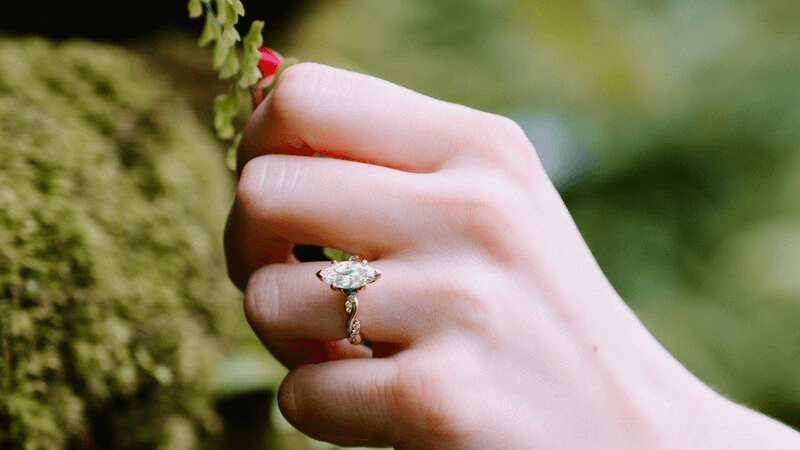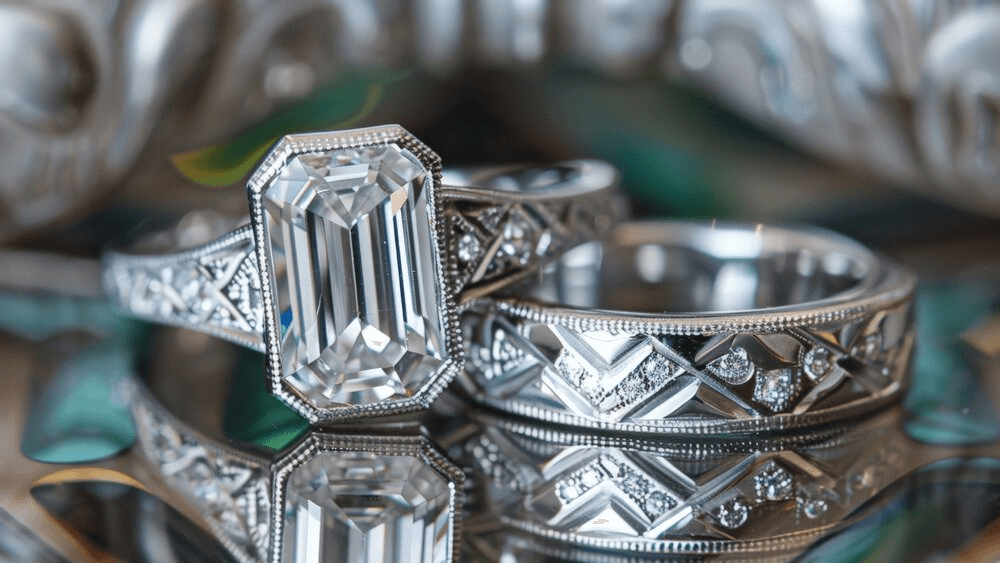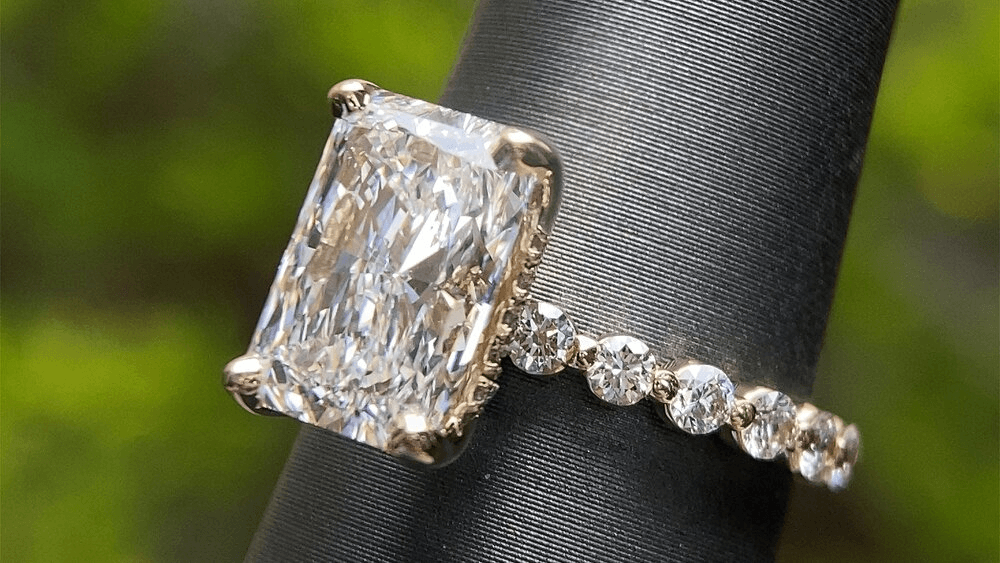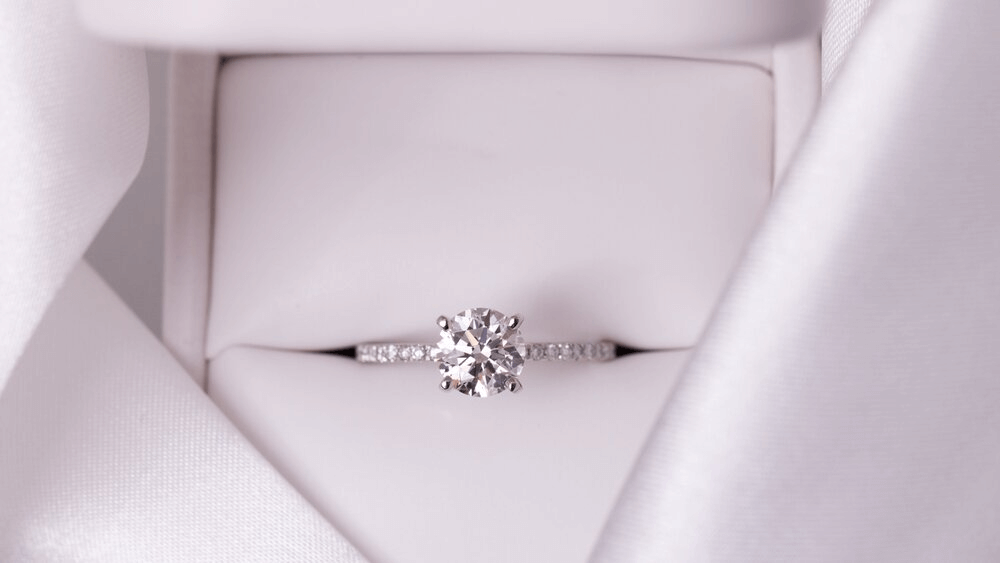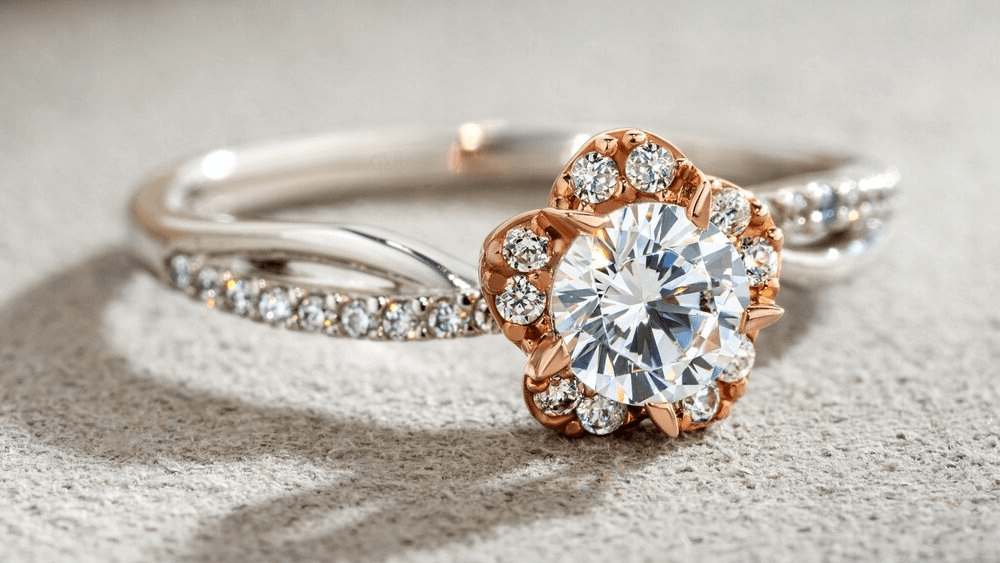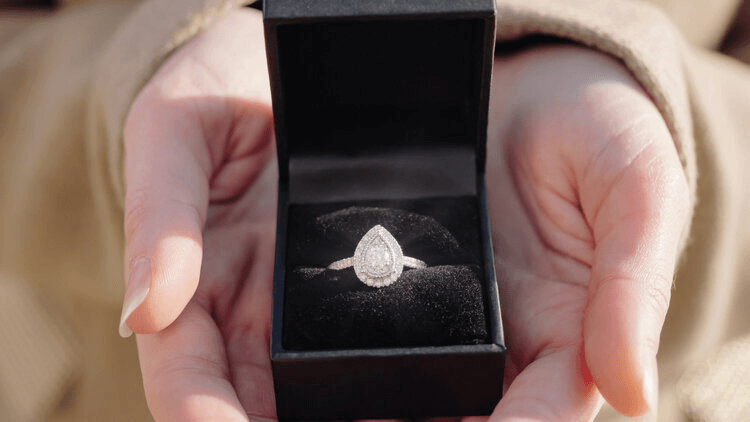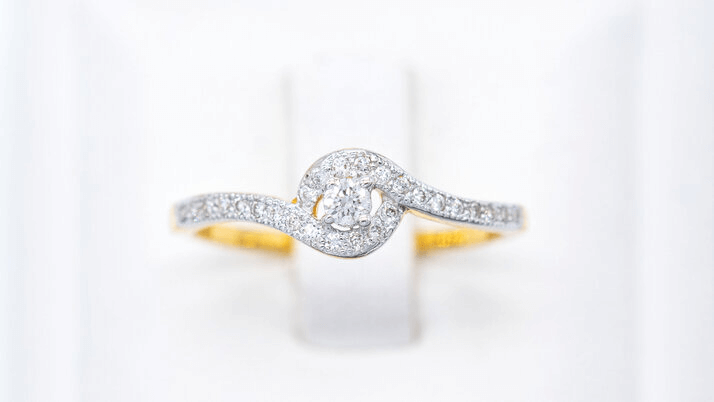Why Skinny Band Rings Make Diamonds Pop

By Gary A.

Edited by Olivia H.
Published Aug 17, 2021
Edited on Mar 31, 2025
A skinny band engagement ring offers a minimalist charm that enhances the beauty of the diamond without overpowering it, making it a timeless and elegant choice for those who love subtle sophistication.

- 4 Quick Tips for Buying a Skinny Band Diamond Engagement Ring
- Introduction
- The Charm of Skinny Bands Minimalism
- The Importance of Metal Strength for Skinny Band Engagement Rings
- Style Considerations
- Our Expert Take
- 7 FAQs
Before we dive deeper into the specifics, here are some practical tips to help guide your decision-making process:
4 Quick Tips for Buying a Skinny Band Diamond Engagement Ring
Tip 1: Understanding Band Durability and Metal Choice
- Opt for Strong Metals: For skinny bands, choosing a robust metal like platinum or high-quality gold (14k or 18k) is crucial. These metals offer the necessary strength to support the band’s slender structure, reducing the risk of bending or warping.
- Gauge the Band Thickness: While skinny bands are stylish, ensure the band is not too thin (ideally not less than 1.5mm). A band that is too thin may be prone to damage, especially under physical stress.
Tip 2: Diamond Setting and Security
- Secure Setting Style: Ensure the diamond setting is secure and appropriate for a skinny band. Bezel settings or well-constructed prongs are suitable choices, as they securely hold the diamond while complementing the band’s slender appearance.
- Balancing Diamond Size and Band Width: Match the size of the diamond with the band width. A very large diamond on a very thin band might not only look disproportionate but also pose a risk to the band’s integrity.
Tip 3: Band Style and Design
- Match with Future Wedding Bands: Consider how the engagement ring will pair with a future wedding band. The engagement ring should complement or match the style of the wedding band, especially in terms of band thickness.
- Consider the Overall Aesthetics: While skinny bands are elegant, they should harmonize with the diamond and the wearer’s personal style. The band should enhance the diamond’s beauty without overshadowing it.
Tip 4: Long-term Wear and Maintenance
- Maintenance and Upkeep: Understand that skinny bands might require more frequent maintenance. Regular check-ups with a jeweler can ensure the band and setting remain in good condition.
- Lifestyle Consideration: Reflect on the wearer’s lifestyle. If they are active or use their hands a lot in daily activities, a slightly thicker band might be a more practical choice for durability.
Now that you’ve got these practical tips, use Jeweler AI below to find the perfect engagement ring that suits your style and budget:
Introduction
Skinny band engagement rings are, as the name suggests, rings featuring only an incredibly slender and elegant band of metal to be worn around the finger. They represent the perfect opposite to highly ornate bands, which are wide enough to accommodate much more ornate detail.
As with any aspect of your chosen engagement ring, whether or not you choose to pursue a skinny band will depend entirely on your bride-to-be’s tastes, style, and lifestyle. While it may not be as big a choice as the diamond itself – or even the type of setting – a skinny band makes a strong statement, and will have a considerable impact on that all-important first impression.
So, should you choose a skinny band engagement ring? Read our complete guide below.
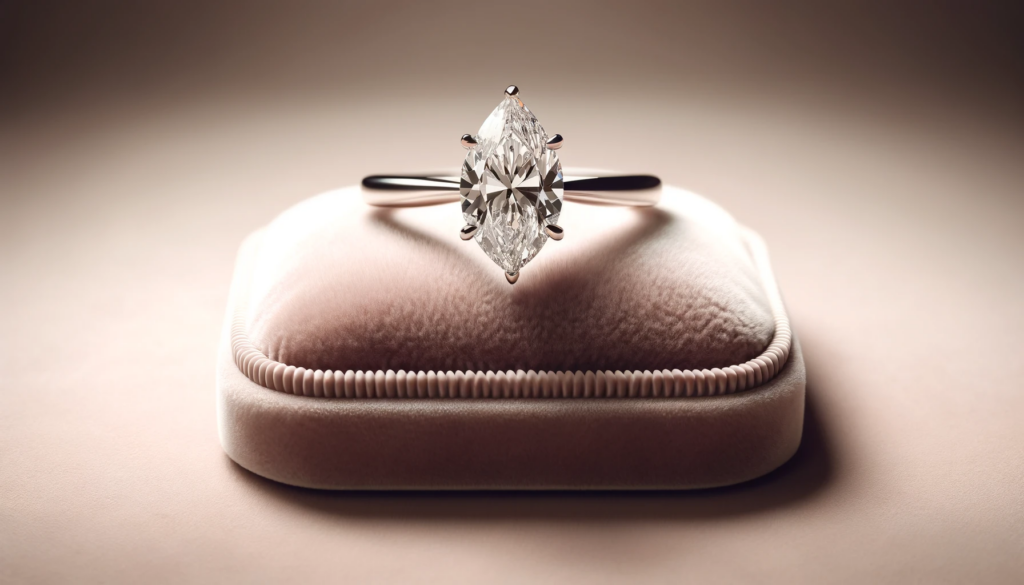
The Charm of Skinny Bands Minimalism
One of the charms of skinny bands is that they’re minimalist. To be considered ‘skinny’, a ring band will feature a width of no more than 2mm – about .5mm smaller than the average ring on the market today. This can go as low as 1.5mm; any lower, and the band could become too vulnerable to bending and breaking.
What is considered ‘safe’ will depend entirely on the carat weight of your chosen diamond, and the side of your chosen setting. Naturally, a heavier diamond will require a more robust band in order for you and your jeweler to feel sure that it is secure – just as a more elaborate setting will require the same.
The Importance of Metal Strength for Skinny Band Engagement Rings
A skinner band is more vulnerable to bending or breaking, particularly if it’s intended to be worn everyday (or even semi-regularly).
Even so, everything hinges on your choice of metal. Cheap jewelry made of low-durability materials like silver or nickel are prone to bending, warping, and splitting with regular wear, for instance.
The good news is, engagement rings are never made from these metals – at least, provided you’re shopping from reputable sources. These metals are simply too flimsy and too untrustworthy to house a diamond, or any precious stone.
Gold, when alloyed with other metals, is very strong. 10K and 14K gold in particular are the most durable options, although 18K is still very strong.
Platinum, tungsten and palladium are all very strong too. Even in a skinny band design, they’re up to the task of holding a diamond for decades – if not longer.
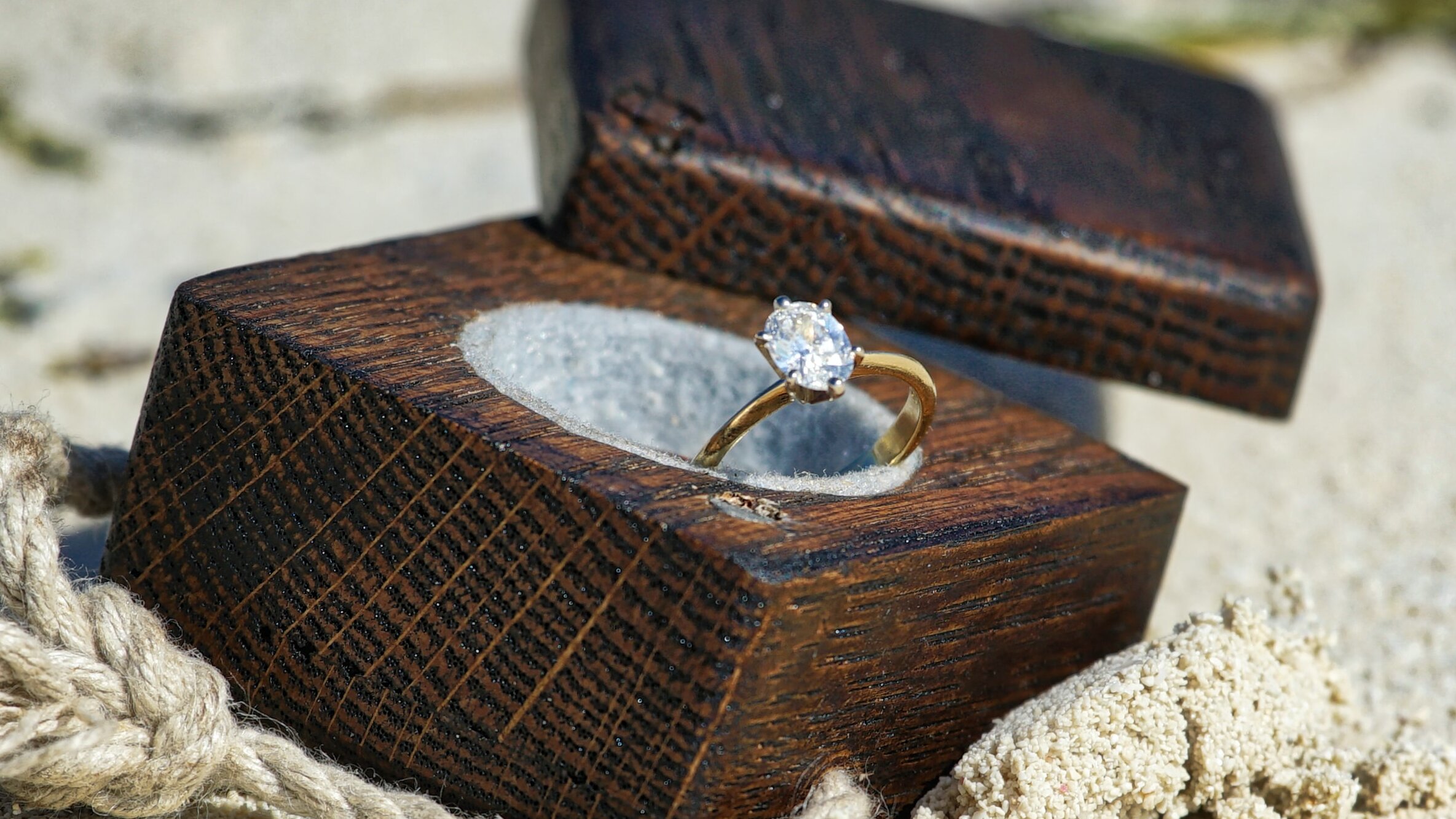
Style Considerations
Below, we look at where to get your inspiration from – and what you can do to make your diamond look even better than it does already.
Celebrity Influences on the Trend
Skinny band engagement rings are extremely popular right now thanks to the attention they have received from celebrities like Jojo fletcher and Jordan Rodgers, but the important thing is their subtle and simplified look ensures that they will never stop being a classic choice among happy couples.
A diamond speaks for itself, and what better way to let it make its own impact than to let it represent the sole focal point of the ring? A plain, skinny band of white or yellow gold, for instance, offers the perfect underpinning for the true showstopper.
So, if your bride-to-be is fond of elegant simplicity, then look no further. Remember that luxury does not necessarily depend on complex and ornate detailing – it can be as simple as a stunning solitaire diamond, and very little else.
That’s not to say that you can’t make any statement with the diamond’s setting. While solitaire will never go out of style, a pave, halo, or cathedral setting can add an additional touch of something special without detracting from the clean, simple look of the skinny band.
Provided the band’s metal is suitably strong – say, a platinum or 14K gold – then you can easily encase the diamond within a pave setting.
Matching with Wedding Bands
Traditionally, a wedding band will be the same thickness as the engagement ring band, even if they were not designed to match. This balances the two bands, which hold equal importance for the wearer.
Of course, one of the biggest selling points for skinny band engagement rings is their ability to sit elegantly alongside your future bride’s wedding band – and, potentially, an eternity ring, too.
If you are already opting for a skinny band engagement ring, then you might want to make it a priority to find a wedding band of the same size – any thicker, and it may overshadow the engagement ring’s dainty, feminine appearance. Any thinner, however, and you could be taking a risk. While it may not feature a diamond, the metal is still vulnerable to being dented out of shape over time.
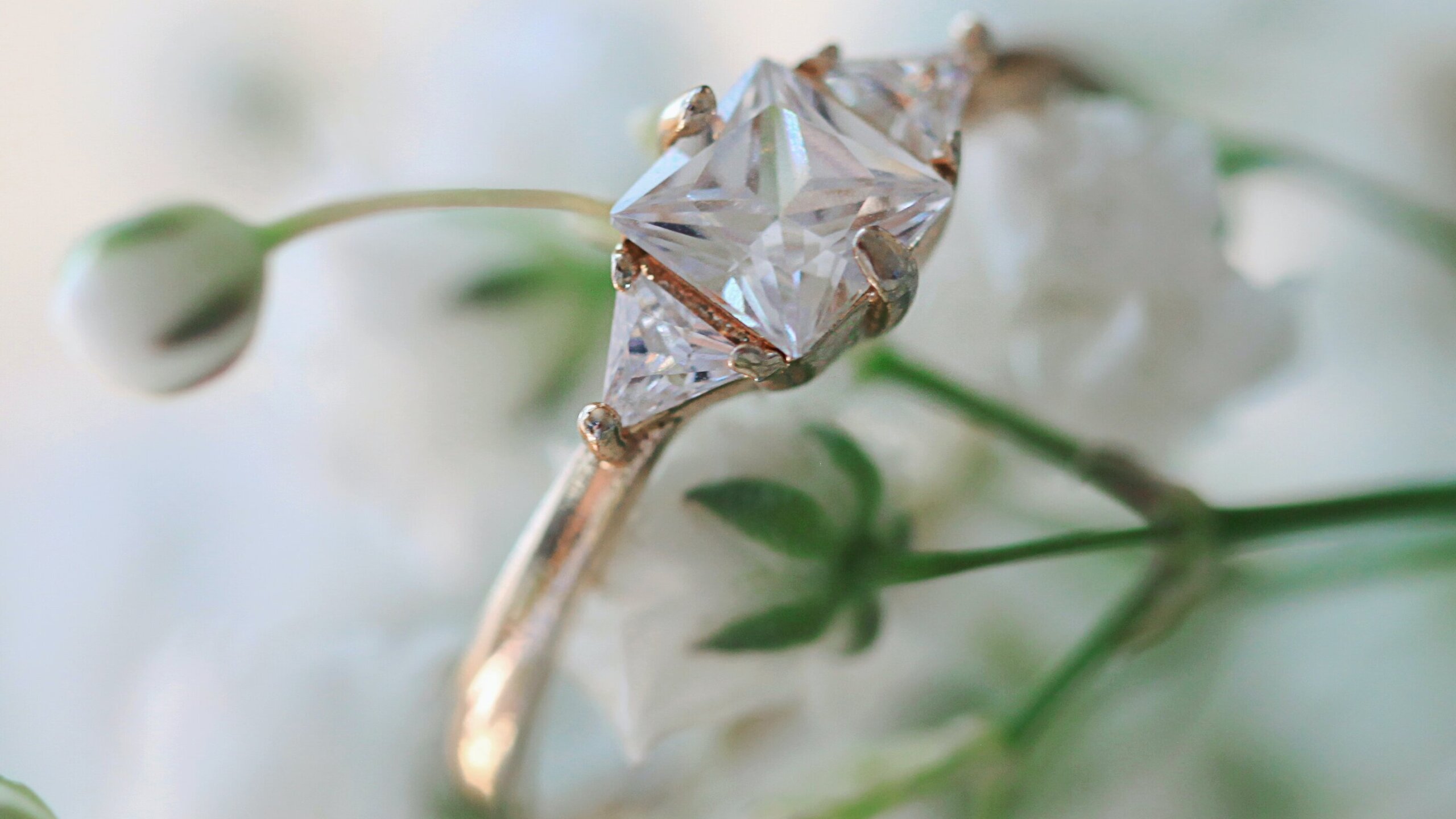
Enhancing the Diamond’s Appearance
The skinny band makes an impact on the diamond and its durability. While it won’t make a 1 carat diamond look like a diamond twice its size, a skinny band is a great way to play with perspective and dimension, and give a more impactful appearance to the gemstone.
Certain diamond cuts, such as pear or oval, can also pull off a similar effect for lower carat diamonds. You may also wish to opt for a halo setting, provided your budget allows, and a white gold metal band – both of which can bring your diamond to the forefront, and give it greater impact on the finger.
Finally, if you wish to make your diamond stand out more, it might be better to go for either yellow or rose gold over platinum or white gold, or, for great cohesion, a mixed metal band. This creates more contrast between the clear diamond and the band – great for making an impact.
Practical Aspects: Daily Wear and Lifestyle Considerations
The thinnest band you can go for is 1.5mm. This is certainly manageable, but it is about as thin as many jewelers are happy to go.
Consider how many years’ worth of use your bride-to-be will get out of this ring. Even if she works an office job and prefers reading to rock climbing, the wear and tear any ring goes through on a daily basis will add up over time.
Thin bands could easily get misshapen by pressure from, say, heavy lifting. Furthermore, if you’re looking to engrave the ring, then a band thinner than 1.5mm is probably the wrong choice for you.
As we mentioned above, it all depends on what other features you want included– or omitted – from your ring, and whether or not you feel confident about bringing them altogether on a super skinny band. Do a lot of research before deciding on this design, or you could be leaving the security of your diamond to chance.
Our Expert Take
The most important factor for anyone considering a skinny band to remember is that the seller – so long as they are trustworthy and focused on standards, as we are – knows best, particularly when it comes to altering the structure of the ring itself.
Our rings are meticulously designed by a jeweler with over 130 years worth of experience, meaning we can take the guesswork out of that first hurdle and ensure you understand whether your chosen diamond and setting can be combined successfully on a skinny band.
7 FAQs
- Q: Is a 1.5mm band too thin for an engagement ring?
- A: While 1.5mm is on the thinner side, it is still a popular choice. However, it’s important to ensure the metal quality is high for durability and the diamond size is proportionate to the band.
- Q: What are the best metal choices for skinny band engagement rings?
- A: Platinum and high-quality gold (14k or 18k) are ideal for skinny bands due to their strength and durability.
- Q: Can skinny band engagement rings accommodate large diamonds?
- A: Yes, but it’s essential to balance the diamond size with the band’s width and strength. Overly large diamonds might require a slightly thicker band for stability.
- Q: Do skinny band engagement rings require more maintenance?
- A: They may need more frequent check-ups to ensure the setting remains secure and the band retains its shape, especially if the band is very thin.
- Q: Are skinny band engagement rings suitable for active lifestyles?
- A: They can be suitable, but it’s advisable to choose a slightly thicker band or a more robust setting if the wearer is very active.
- Q: Can I pair a skinny band engagement ring with a thicker wedding band?
- A: Yes, but the aesthetic balance is important. Ideally, the engagement ring and wedding band should complement each other in terms of style and thickness.
- Q: How do I ensure the diamond is secure in a skinny band setting?
- A: Choose secure settings like a bezel or well-constructed prongs and regularly check with a jeweler to ensure the setting remains tight and secure.
Discover the perfect skinny band engagement ring with Jeweler AI – where elegance and personalization meet to create your dream ring.
.
FOLLOW-UP GUIDE SERIES





